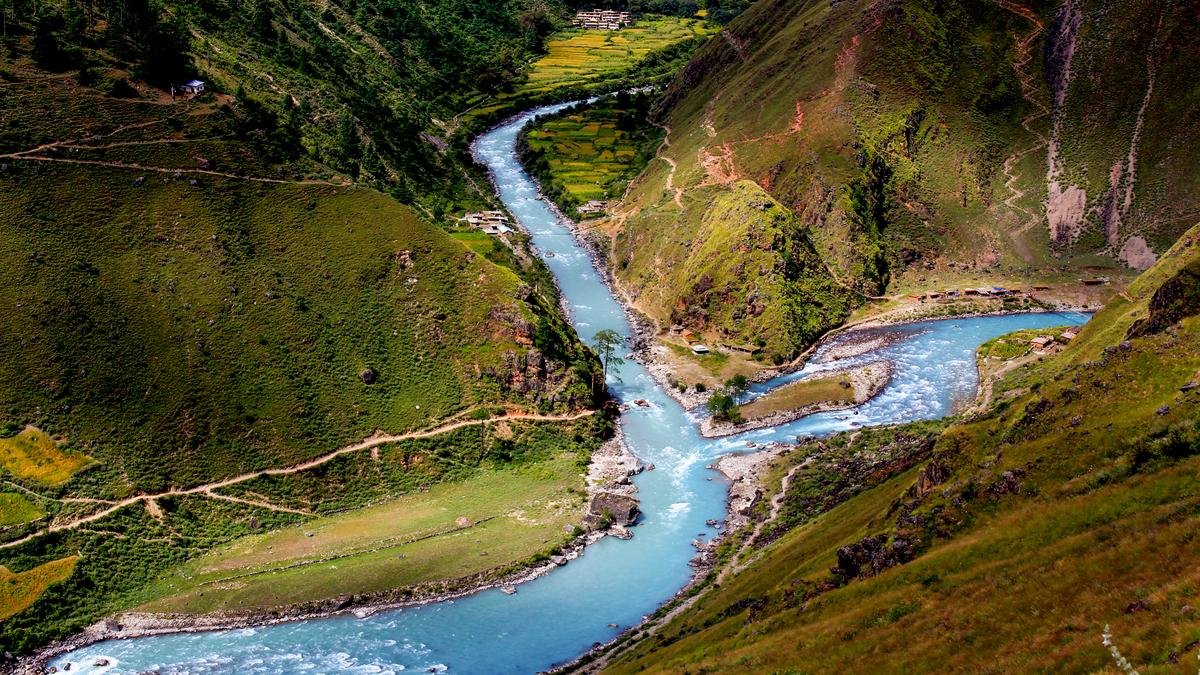
Introduction
River channels—those lifelines of ecosystems and human civilization—can behave strikingly differently. Some maintain a single, steady course, while others diverge into braided or multi-threaded systems. A new study by geographers at the University of California, Santa Barbara (UCSB) has finally revealed why this divergence occurs, thanks to surging data from satellite imagery.CivilsDailyPw Only IAS
Key Discovery: Erosion vs. Deposition Imbalance
Researchers analyzed 84 rivers worldwide over 36 years (1985–2021) using Landsat satellite imagery and particle image velocimetry techniques. This enabled them to generate over 400,000 measurements of erosion and deposition behaviors.Legacy IAS AcademyPw Only IAS
- Single-thread rivers maintain a delicate equilibrium, where bank erosion is consistently balanced by sediment deposition. The result? A stable, single-channel course.CivilsDailyLegacy IAS Academy
- Multi-thread rivers, or braided systems, arise where this balance breaks—erosion outpaces deposition, causing the channel to widen and eventually split into multiple threads.CivilsDailyPw Only IAS
Vegetation’s Crucial Role (Stanford Insight)
A companion finding underscores the ecological dimension: riverbank vegetation significantly influences channel behavior.
- Vegetated bends tend to migrate laterally and form natural levees, reducing channel sinuosity.
- In contrast, unvegetated bends drift downstream more freely, altering sediment patterns and potentially facilitating new paths.Legacy IAS Academy
Thus, veins of vegetation don’t just beautify landscapes—they reshape rivers.
Relevance for Indian River Systems: Ganga and Brahmaputra
India’s iconic rivers offer clear examples of these dynamics:
- The Brahmaputra—a textbook braided river—shows extremely rapid lateral erosion and unstable multi-thread channels.Legacy IAS AcademyPw Only IAS
- The Ganga features stretches that oscillate between single-thread and braided forms, often influenced by human modifications.
- Traditional flood models, which assume static channels and rating curves, now appear outdated and inadequate for predicting flow in such dynamic systems.Legacy IAS AcademyPw Only IAS
Why It Matters: Flood Risk and Ecological Management
Braided rivers are more prone to flooding, erosion, and sudden shifts—making them hazardous in densely populated areas. Key insights from the study include:
- The need for frequent updates to flood-modeling tools, especially rating curves.
- Encouragement of nature-based interventions, such as:
- Removing unnecessary embankments
- Restoring floodplain connectivity
- Reintroducing vegetated buffer zones
- Reviving abandoned channels
- Constructing wetlands in braided zones
These approaches help slow flow, reduce damage, and restore ecological stability.CivilsDailyPw Only IAS
Paradigm Shift in Geomorphology
The study marks a conceptual shift:
- From viewing rivers as balanced systems to recognizing instability-driven transformations.
- From treating vegetation as a passive element to acknowledging its active role in channel shaping.
- From static modeling to embracing dynamic, evolving channel behavior—crucial in an era of climate variability.Legacy IAS AcademyPw Only IAS
SEO-Enhanced Key Sections
What Makes a River Single-Thread or Multi-Thread?
Balance between erosion and deposition determines whether a river stays single-threaded or splits into braided channels.
Why Vegetation Matters in River Behavior
Bank vegetation affects the direction and stability of river bends, shaping long-term river paths.
How This Research Helps in India
Findings urge the revision of flood forecasting and promote nature-based solutions for rivers like the Ganga and Brahmaputra.
Next Steps for River Management
Restore natural riverine habitats
Adopt dynamic flood models
Prioritize ecosystem-based interventions







Leave a Reply